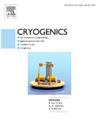亚开尔文3He吸附冷却系统的回顾和历史:从基本机制到应用
IF 2.1
3区 工程技术
Q3 PHYSICS, APPLIED
引用次数: 0
摘要
亚开尔文技术对于空间探测、量子计算和凝聚态物理等应用至关重要。在吸附制冷、绝热退磁制冷、稀释制冷等传统亚开尔文制冷技术中,吸附制冷以其无振动、结构紧凑、无电磁干扰等特点在空间环境中具有独特的竞争力。基于减压蒸发冷却原理,3He吸附冷却器的温度约为300 mK,由于更高的蒸汽压力和没有超流体约束,超过了4He吸附冷却器(~ 800 mK)。最初在20世纪60年代开发的吸附系统,对于需要可靠性和简单性的任务仍然至关重要。技术的进步包括模块化和多级设计,将工作温度扩展到250 mK。使用两个吸收泵的连续系统减轻了间歇性,实现了数周的稳定冷却。空间应用面临着微重力的挑战,通过使用利用毛细力限制液体氦的多孔基质来解决这一问题。成功的实现包括Herschel卫星,其冷却功率为10 μW,达到290 mK。混合冷却器将吸附冷却器与ADR或DR集成在一起,可实现超低温(~ 50 mK),这对于SPICA和ATHENA等任务至关重要。目前的研究主要集中在不依赖重力的设计,机械预冷以消除液氦依赖,以及将低温链从300 K提高到50 mK。本文综述了3He吸收冷却器的原理,从低温恒温器到模块化系统的技术演变,空间适应性和混合结构。讨论了非平衡吸附和微重力流体动力学相关的关键挑战。本文章由计算机程序翻译,如有差异,请以英文原文为准。
Review and history of sub-Kelvin 3He sorption cooling systems: From basic mechanisms to applications
Sub-Kelvin technologies are essential for applications such as space detection, quantum computing, and condensed-matter physics. Among traditional sub-Kelvin technologies, including sorption cooling, adiabatic demagnetization refrigeration, and dilution refrigeration, sorption cooling shows unique competitiveness in space environments for its vibration-free operation, compactness, and absence of electromagnetic interference. Based on the principle of pressure reduction evaporation cooling, 3He sorption coolers achieve temperatures around 300 mK, surpassing 4He sorption coolers (∼800 mK) due to higher vapour pressures and the absence of superfluid constraints. 3He sorption systems, initially developed in the 1960s, remain crucial for missions requiring reliability and simplicity. Advancements include modular and multi-stage designs, extending operating temperatures to 250 mK. Continuous systems using two sorption pumps mitigate intermittency, enabling stable cooling for weeks. Space applications face micro-gravity challenges, which are addressed by using porous matrices that leverage capillary forces to confine liquid 3He. Successful implementations include the Herschel satellite, which achieved 290 mK with 10 μW cooling power. Hybrid coolers, which integrate sorption coolers with ADR or DR, achieve ultra-low temperatures (∼50 mK), essential for missions like SPICA and ATHENA. Current research is focused on gravity-independent designs, mechanical precooling to eliminate liquid helium dependency, and enhancing cryochains from 300 K to 50 mK. This paper reviews 3He sorption cooler principles, technological evolution from cryostats to modular systems, space adaptations, and hybrid architectures. Key challenges related to non-equilibrium adsorption and micro-gravity fluid dynamics are discussed.
求助全文
通过发布文献求助,成功后即可免费获取论文全文。
去求助
来源期刊

Cryogenics
物理-热力学
CiteScore
3.80
自引率
9.50%
发文量
0
审稿时长
2.1 months
期刊介绍:
Cryogenics is the world''s leading journal focusing on all aspects of cryoengineering and cryogenics. Papers published in Cryogenics cover a wide variety of subjects in low temperature engineering and research. Among the areas covered are:
- Applications of superconductivity: magnets, electronics, devices
- Superconductors and their properties
- Properties of materials: metals, alloys, composites, polymers, insulations
- New applications of cryogenic technology to processes, devices, machinery
- Refrigeration and liquefaction technology
- Thermodynamics
- Fluid properties and fluid mechanics
- Heat transfer
- Thermometry and measurement science
- Cryogenics in medicine
- Cryoelectronics
 求助内容:
求助内容: 应助结果提醒方式:
应助结果提醒方式:


